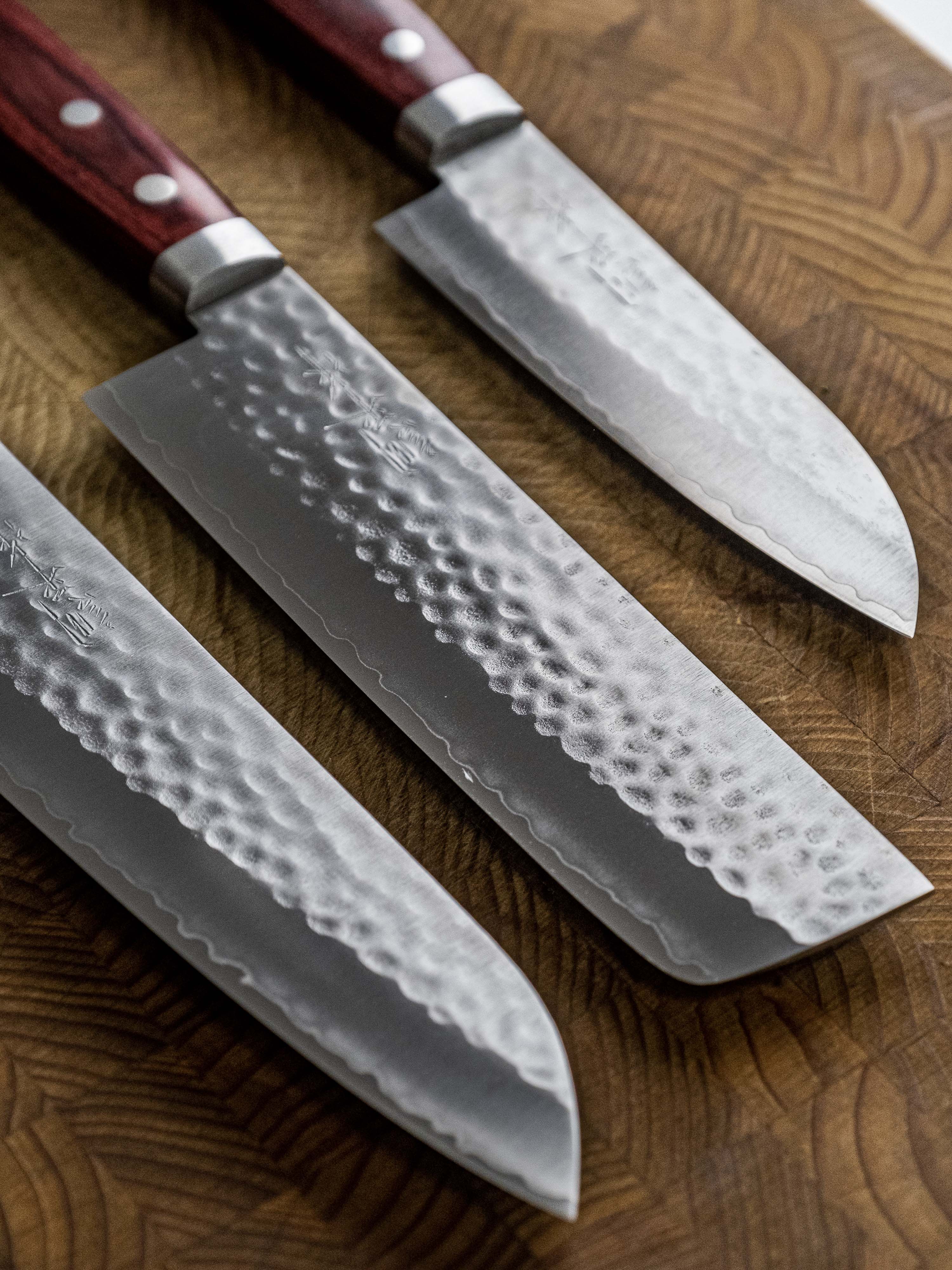Menu
















Nigara Hamono AS Tsuchime Migaki Kiri Petty 140 mm
- Sale price
- $246.45
- Regular price
- $289.95
- You save
- $43.50 (16%)
Taxes and shipping calculated at checkout
In stock and ready for shipping
Product Information
| Blade Length | 140 mm |
| Total Length | 267 mm |
| Steel | Aogami (Blue) Super Stainless Clad |
| Handle | Mono Ebony |
| Ferrule | N/A |
| Rockwell | 63-65 |
| Height Spine to heel | 31 mm |
| Width at Spine | 1.84 mm |
| Weight | 84 grams |
| Bevel | Double (50/50) |
The Blacksmith
Nigara Hamono is located in Hirosaki city, Aomori Prefecture, on the west coast of the very northern tip of the main island of Honshu, Japan. Their family has a 350 year old history of making knives and swords and more recently has expanded into structural steel beams for use in construction. Tsuyoshi Yoshizawa stands as the 8th generation smith in the lineage of blacksmiths at Nigara Hamono and creates knives with his younger brother and two other craftsmen.
Nigara Hamono knives are characterized by their signature tsuchime pattern, as well as play with stainless damascus. These knives stand out for their aesthetic appeal, thinness behind the edge, and functionality, given they make their steel in house, and work primarily with high powdered stainless steels. They produce uniquely versatile profiles, ranging from very flat “kiritsuke nakiris” to aggressively curved “kiritsuke gyutos”.
The Knife
The petty is the Japanese equivalent of the western style paring knife. They're usually a little longer and I could never go back after using one. The idea is all the on board work is done with your gyuto or chef knife and everything in hand is done with the petty. Not limited to capping strawberries, peeling, turning, or coring veggies, and smaller butchery tasks like chicken, small fish, or deboning a pork shoulder.
- This knife is made from 3 layers of steel using a technique called Sanmai (Forge welding). It involves laminating a piece of Carbon steel with two pieces of Stainless steel giving the knife all the benefits of the carbon steel (Edge retention, ease of sharpening, cutting feel) and the Ease of Maintenance from Stainless steel. 2-3 millimeters of the carbon steel is exposed at the edge of the knife and is susceptible to rust and discouloration if not properly maintained.
- Simply Wipe the knife with a damp cloth immediately after use to keep it from rusting or discouloring.
- Wash with regular dish soap and warm water using a none abrasive sponge or cloth.
- Never put your knife in the Dishwasher. The extreme heat will ruin the wooden handle.
- Highly acidic ingredients (Onions, Tomatoes, Citrus) Will cause rust and oxidation to happen faster, thus the user must ensure the knife is wiped clean immediately after working with such an ingredient.
- Should any rust form it can be removed using a rust eraser or a mixture of Baking soda and water to simply scrub it clean.
- Avoid Bones, Frozen foods, nuts and hard candies, parmesan rinds, woody stems or anything other than fruits, vegetables and proteins.
Recommended for You
- Choosing a selection results in a full page refresh.
SHOP
IN-STORE CLASSES/SERVICES
STORE POLICIES
CONTACT US
142 JAMES ST. S HAMILTON ON L8P3A2
MONDAY - SATURDAY :
11 AM to 6 PM
SUNDAY : CLOSED
195 NORSEMAN ST UNIT 14 ETOBICOKE ON M8Z0E9
MONDAY - SATURDAY :
11 AM to 6 PM
SUNDAY : CLOSED
Country/region
© 2024, SHARP Knife Shop Powered by Shopify





